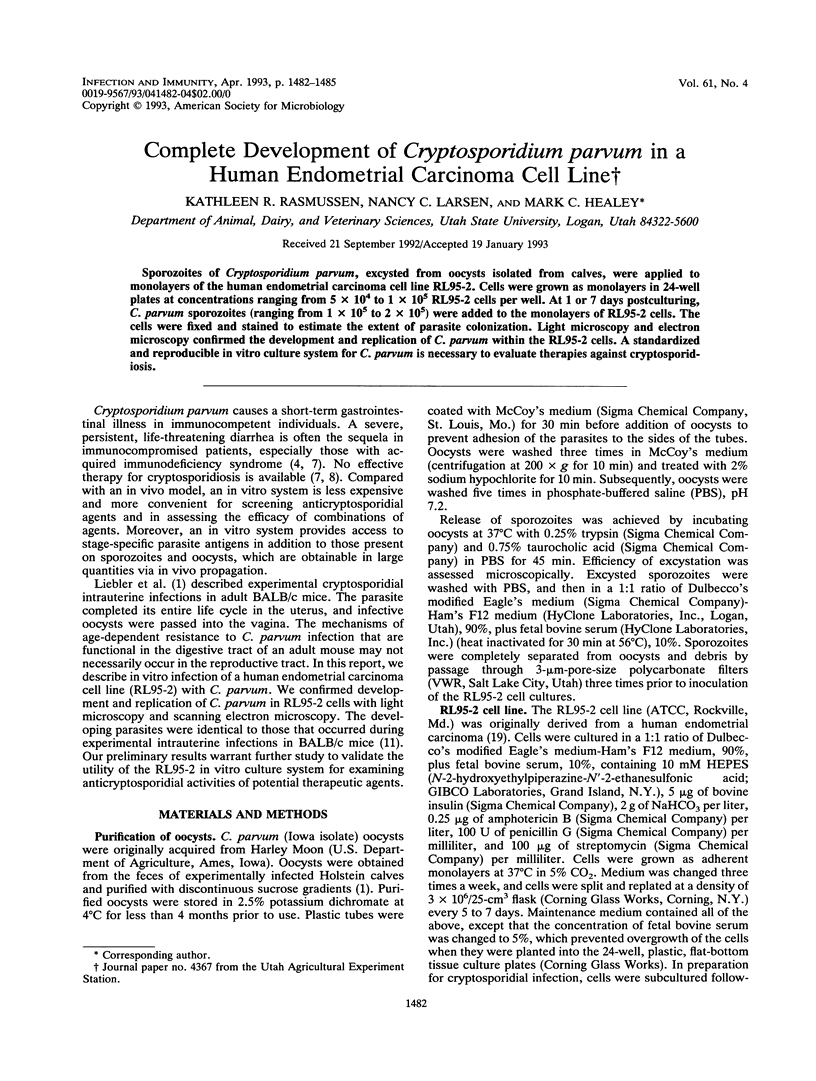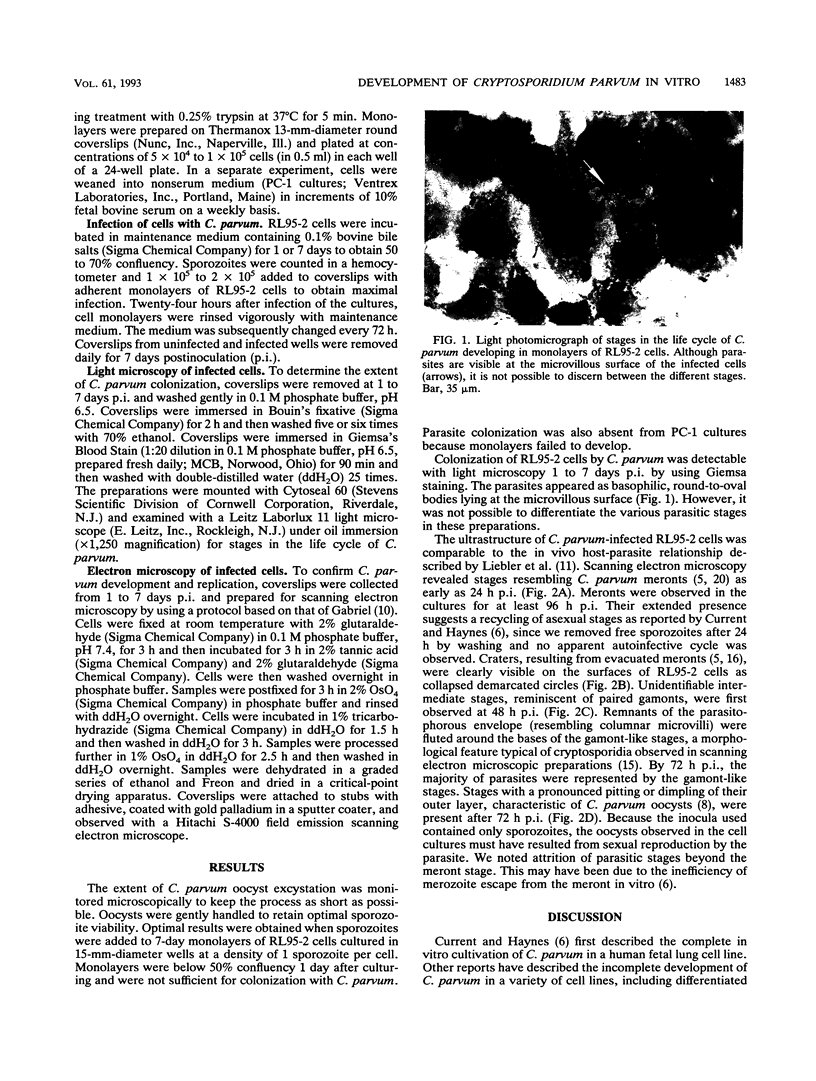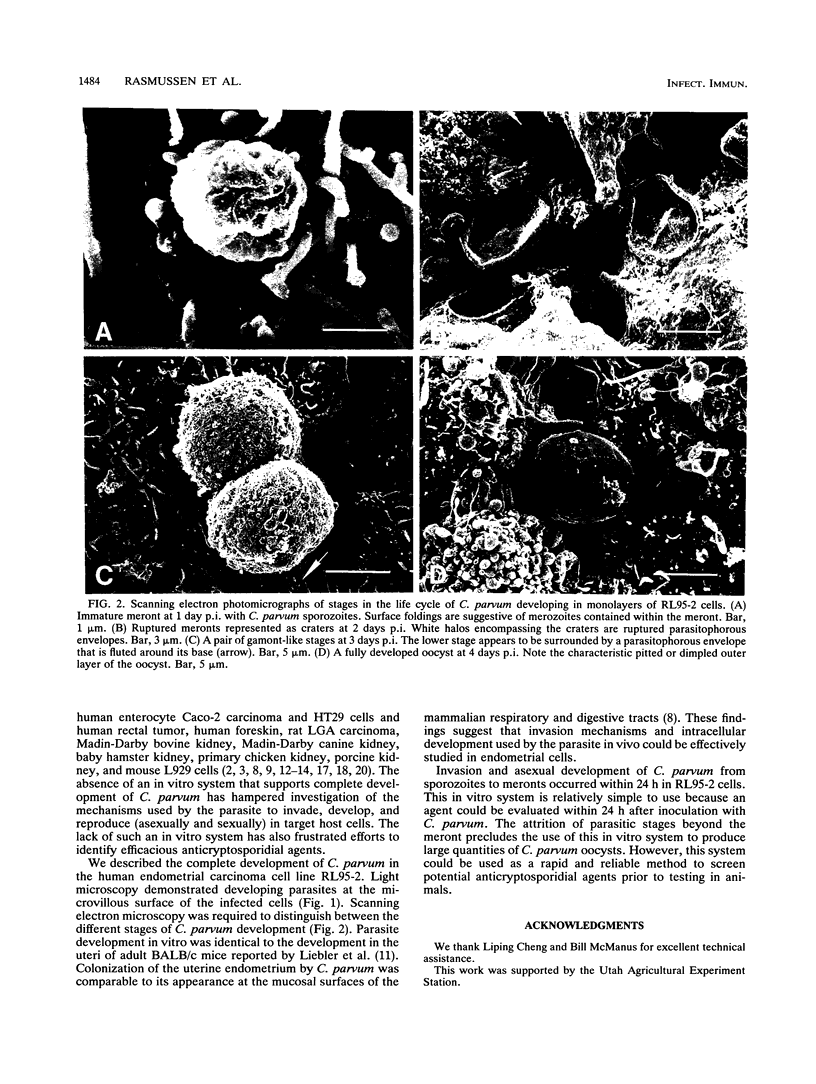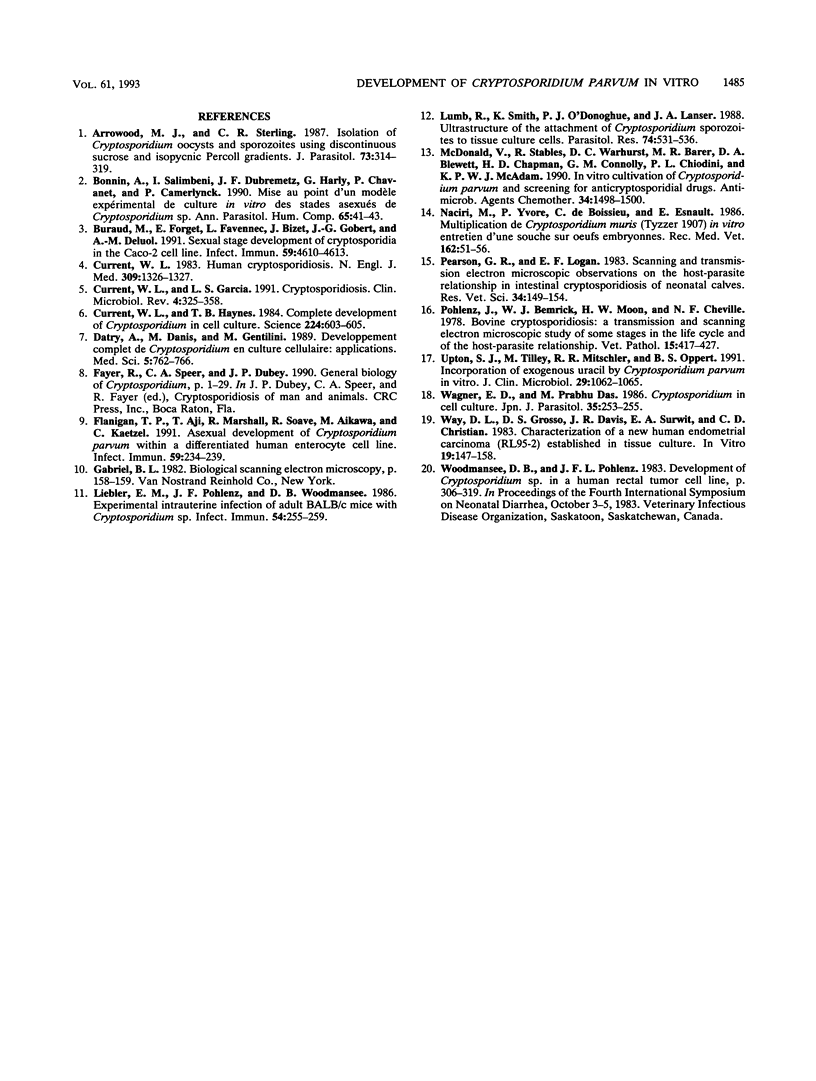Abstract
Sporozoites of Cryptosporidium parvum, excysted from oocysts isolated from calves, were applied to monolayers of the human endometrial carcinoma cell line RL95-2. Cells were grown as monolayers in 24-well plates at concentrations ranging from 5 x 10(4) to 1 x 10(5) RL95-2 cells per well. At 1 or 7 days postculturing, C. parvum sporozoites (ranging from 1 x 10(5) to 2 x 10(5) were added to the monolayers of RL95-2 cells. The cells were fixed and stained to estimate the extent of parasite colonization. Light microscopy and electron microscopy confirmed the development and replication of C. parvum within the RL95-2 cells. A standardized and reproducible in vitro culture system for C. parvum is necessary to evaluate therapies against cryptosporidiosis.
Full text
PDF



Images in this article
Selected References
These references are in PubMed. This may not be the complete list of references from this article.
- Arrowood M. J., Sterling C. R. Isolation of Cryptosporidium oocysts and sporozoites using discontinuous sucrose and isopycnic Percoll gradients. J Parasitol. 1987 Apr;73(2):314–319. [PubMed] [Google Scholar]
- Buraud M., Forget E., Favennec L., Bizet J., Gobert J. G., Deluol A. M. Sexual stage development of cryptosporidia in the Caco-2 cell line. Infect Immun. 1991 Dec;59(12):4610–4613. doi: 10.1128/iai.59.12.4610-4613.1991. [DOI] [PMC free article] [PubMed] [Google Scholar]
- Current W. L., Garcia L. S. Cryptosporidiosis. Clin Microbiol Rev. 1991 Jul;4(3):325–358. doi: 10.1128/cmr.4.3.325. [DOI] [PMC free article] [PubMed] [Google Scholar]
- Current W. L., Haynes T. B. Complete development of Cryptosporidium in cell culture. Science. 1984 May 11;224(4649):603–605. doi: 10.1126/science.6710159. [DOI] [PubMed] [Google Scholar]
- Flanigan T. P., Aji T., Marshall R., Soave R., Aikawa M., Kaetzel C. Asexual development of Cryptosporidium parvum within a differentiated human enterocyte cell line. Infect Immun. 1991 Jan;59(1):234–239. doi: 10.1128/iai.59.1.234-239.1991. [DOI] [PMC free article] [PubMed] [Google Scholar]
- Liebler E. M., Pohlenz J. F., Woodmansee D. B. Experimental intrauterine infection of adult BALB/c mice with Cryptosporidium sp. Infect Immun. 1986 Oct;54(1):255–259. doi: 10.1128/iai.54.1.255-259.1986. [DOI] [PMC free article] [PubMed] [Google Scholar]
- Lumb R., Smith K., O'Donoghue P. J., Lanser J. A. Ultrastructure of the attachment of Cryptosporidium sporozoites to tissue culture cells. Parasitol Res. 1988;74(6):531–536. doi: 10.1007/BF00531630. [DOI] [PubMed] [Google Scholar]
- McDonald V., Stables R., Warhurst D. C., Barer M. R., Blewett D. A., Chapman H. D., Connolly G. M., Chiodini P. L., McAdam K. P. In vitro cultivation of Cryptosporidium parvum and screening for anticryptosporidial drugs. Antimicrob Agents Chemother. 1990 Aug;34(8):1498–1500. doi: 10.1128/aac.34.8.1498. [DOI] [PMC free article] [PubMed] [Google Scholar]
- Pearson G. R., Logan E. F. Scanning and transmission electron microscopic observations on the host-parasite relationship in intestinal cryptosporidiosis of neonatal calves. Res Vet Sci. 1983 Mar;34(2):149–154. [PubMed] [Google Scholar]
- Pohlenz J., Bemrick W. J., Moon H. W., Cheville N. F. Bovine cryptosporidiosis: a transmission and scanning electron microscopic study of some stages in the life cycle and of the host-parasite relationship. Vet Pathol. 1978 May;15(3):417–427. doi: 10.1177/030098587801500318. [DOI] [PubMed] [Google Scholar]
- Upton S. J., Tilley M., Mitschler R. R., Oppert B. S. Incorporation of exogenous uracil by Cryptosporidium parvum in vitro. J Clin Microbiol. 1991 May;29(5):1062–1065. doi: 10.1128/jcm.29.5.1062-1065.1991. [DOI] [PMC free article] [PubMed] [Google Scholar]
- Way D. L., Grosso D. S., Davis J. R., Surwit E. A., Christian C. D. Characterization of a new human endometrial carcinoma (RL95-2) established in tissue culture. In Vitro. 1983 Mar;19(3 Pt 1):147–158. doi: 10.1007/BF02618053. [DOI] [PubMed] [Google Scholar]




